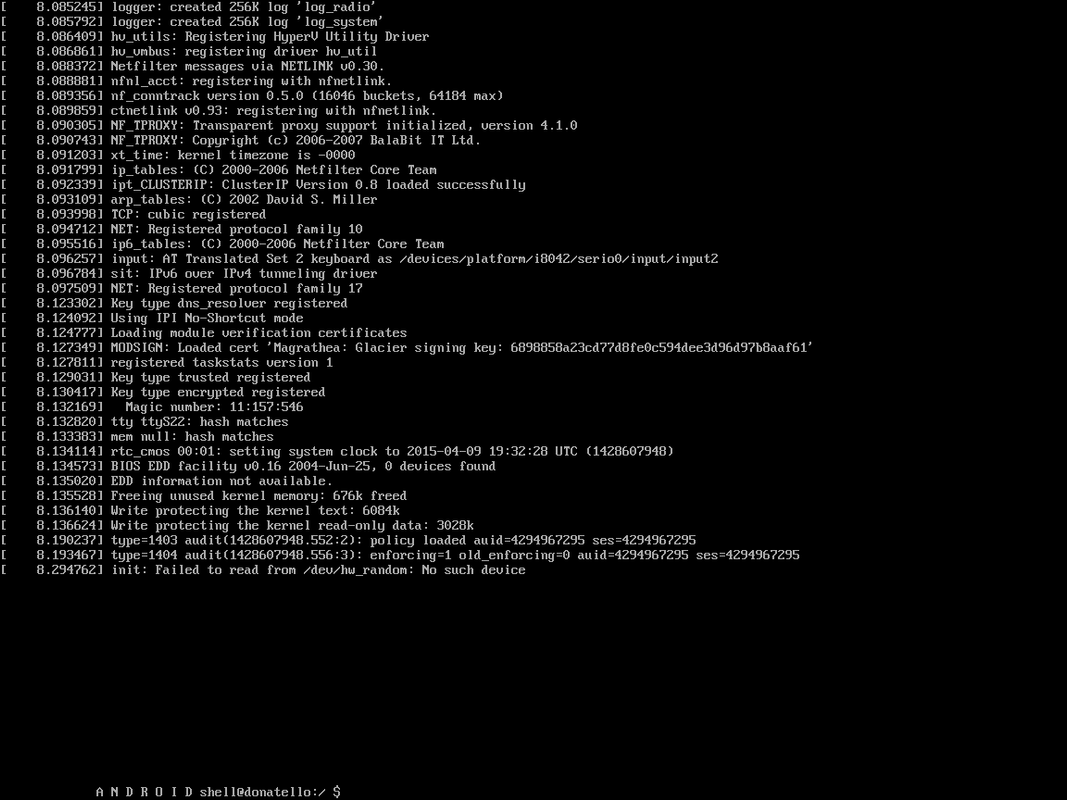I create a blank cordova application in visual studio 2015 and start debugging with the visual studio android emulators (first with the lollipop and then kitkat). XDE starts and the screen displays OS is starting.... It stays like that for quite a while until it displays
The emulator is unable to connect to the device operating system;
The device did not response to the connect request.
Some functionalities might be disabled'
After closing the dialog, it stays there forever until I kill the emulator. Killing the emulator triggers an error from visual studio.
Could not start emulated device 'VS Emulator Lollipop Phone'.
When I open hyper-v, I see the vm in the list and shown as running. When I connect, I see the console screen as below


After alot of searching I got this working. Hope this helps. I found it in the comments on MSDN Article for Android Emulator with Visual Studio 2015
The new images might work if you disable OpenGL by going to Program Files (or Program Files x86 if you're on a 64-bit machine) \ Microsoft XDE \ 10.0.0.0 \ SKUs \ Android \ xdesku.xml and deleting this line: GuestDisplayProvider = "VsEmulator.OpenGLGuestDisplay". However, without OpenGL turned on you will not be able to take advantage of many of the new features